#17: And did those feet in ancient times, walk on a Mews?
Ed Jefferson is attempting to visit every Mews in Greater London. This week: mysterious Parliamentary gargoyles, Crypto factories of the 1910s, and the secret history of paper and it's dark satanic mills.
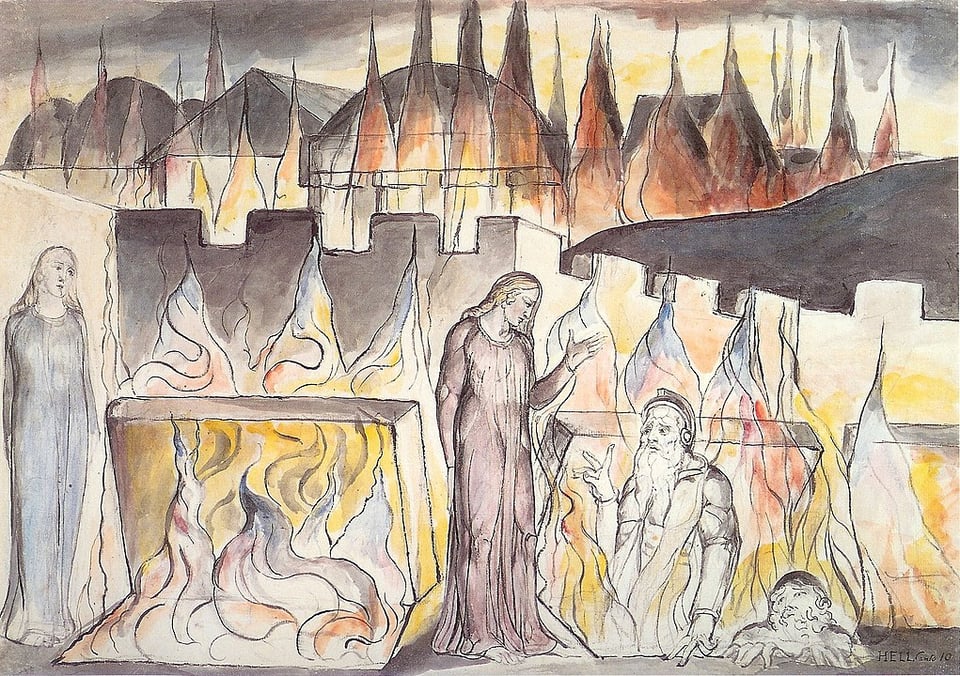
#161 China Hall Mews, Southwark, SE16
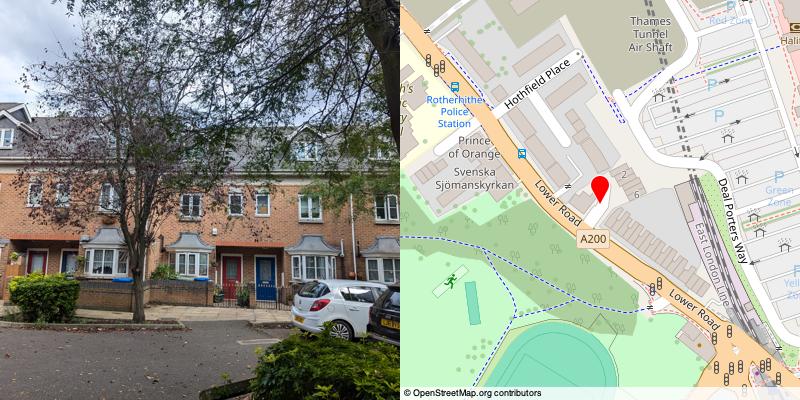
A row of houses built on land behind a pub called The China Hall in about 2001. The pub itself is currently defunct, but appears to have been a fairly old school sort of boozer, whose nature I suspect can be perfectly triangulated using the following review quotes: “Good old fashioned simple bar.”, “The punters are great and the banter is even better.”, “What an absolute s**thole.”
In fact it was even more old school than you’d think, having been around in varying forms since the 1700s - the first China Hall was actually a theatre behind the original pub, funded and cursorily named by one Jonathan Oldfield, a fine china magnate. Some enterprising local historians have claimed that the pub was visited by no less than Samuel Pepys, but a) what he actually says in his famous diary is that he visited a “China alehouse” of unspecified location and b) he’d been dead for about 70 years by the time Oldfield built his theatre. Maybe he had access to a Gary Sparrow-style time corridor and used it to get pissed up in the future?
The pub itself nearly disappeared recently - having converted the upper floors into flats, a property developer proceeded to do the same to actual bar area, without e.g. applying for planning permission - retrospective permission was then refused, meaning as it stands it can only be used as a drinking establishment (though it is yet to reopen). Bad news for one NIMBY who supported the application on the basis that they had hated living next to door a pub for the previous 20 years, during which they had never apparently considered e.g. moving.
#162 Lagado Mews, Southwark, SE16

Not hugely clear why this section of a not very long road that then becomes Timber Yard Road needed it’s own name, but it has one - a deep cut reference to the less well-remembered 3rd bit of Gulliver’s Travels, which doesn’t feature very small people, very big people or horse people.
The reason for the reference is that Gulliver himself is a local boy - described as being from Redriff, an older name for Rotherhithe. I am not sure whether whoever named the street had actually read the book, in which Lagado is the capital of a land described “unhappily cultivated, with houses ill-contrived and ruinous, and its people’s countenances expressing misery and want”, but still.
#163 Clarence Mews, Southwark, SE16
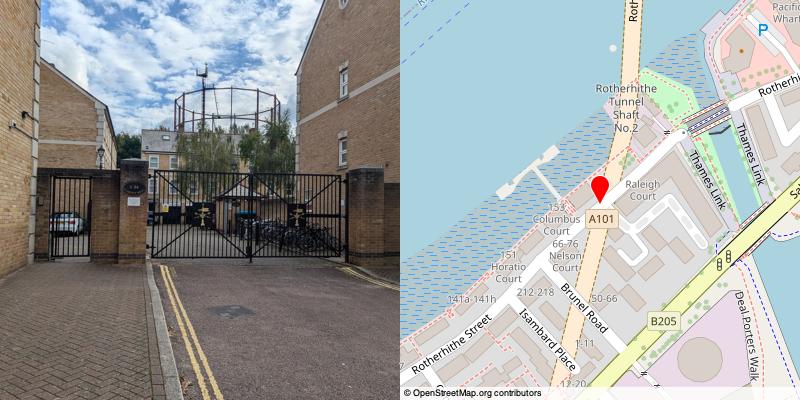
1990s housing development named after Clarence Wharf, to the north, which was used to ship in coal for the gas works that used to sit on this site, hence the gasometer visible in the background, though that’s likely itself to disappear as there are ongoing proposals to develop that land too. (Don’t worry gasometer fans, the developers say they’re going to ‘incorporate the footprint’ of the gasometer by marking it on the floor, or something.)
The riverside residential developments that replaced Clarence Wharf were required to retain and rebuild part of the pier, though it’s only for the use of residents - however, I don’t recall ever having seen anyone on it in at least the last 20 years and the management company’s website states it is “currently closed pending repairs” so they’re going well I assume.

#164 King Edward The Third Mews, Southwark, SE16

At first glance the naming here seems a bit prosaic - it’s housing built behind the remains of a manor house built for King Edward III, but it’s (possibly) slightly more satisfying than that: Edward III was big on falconry, and historians think this was probably built for that purpose - so the manor house may well have had a Mews in the oldest sense of the word (see Mews Letter #2 for details on the link between falcons and Mewses).
#165 Rosebud Mews, Southwark, SE16

The back yard of Millstream House got a name when its garages were demolished and replaced with 2 houses in the mid-2010s.
Millstream House itself was built in the early 20th century and has been augmented a few times - perhaps most notably after it was bombed during the Blitz - upon reconstruction it gained a gargoyle which had been knocked off the Houses of Parliament when they themselves were hit in the final night of the bombing campaign. What’s odd is that no-one really seems to have an idea why a gargoyle from the Houses of Parliament should have ended up being rebuilt into a housing block three miles away. Maybe he just fancied a change of scenery.
#166 Hatchers Mews, Southwark, SE1
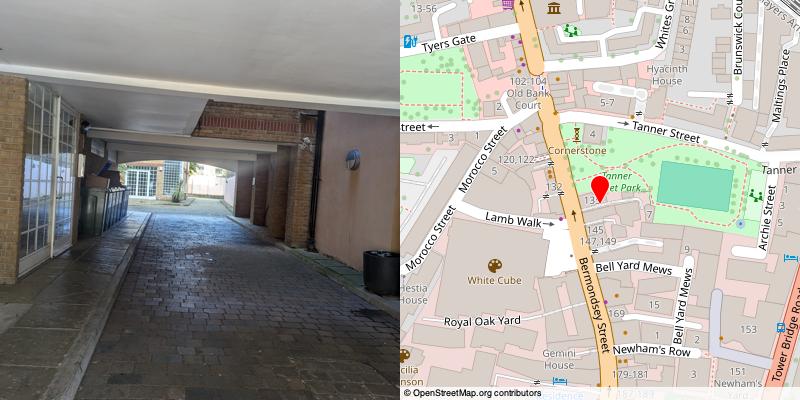
Possibly after a Mr Hatcher - the surname apparently originating as a description of apparently someone who lived near a gate - though the name might be an artefact of the redevelopment that took place in the 1990s. Maybe someone was a fan of The New Adventures Of Superman.
Older maps show a road called “Medley’s Place”, though the first thing that came up when I researched that was a 19th century newspaper story about 2 horses being roasted to death in a fire, so maybe that was considered a bit of a bad vibe.
#167 Bell Yard Mews, Southwark, SE1
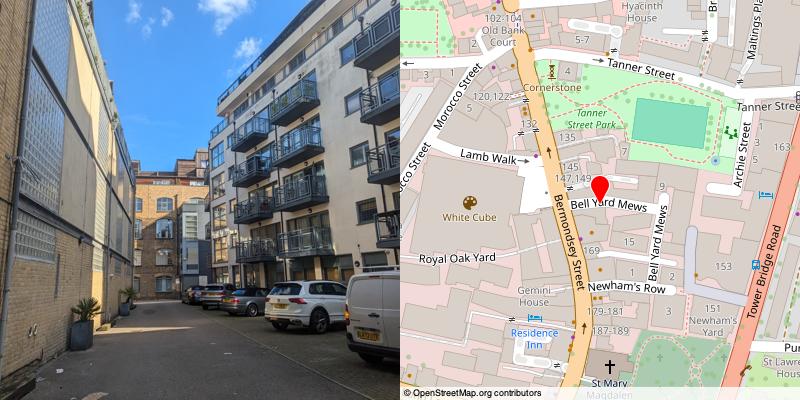
What use to be a road called Bell Court and the site of various things including a “Hat Manufactory” and the “Crypto electrical factory” which presumably was where you mined all your bitcoins in the 1910s.
#168 Market Yard Mews, Southwark, SE1
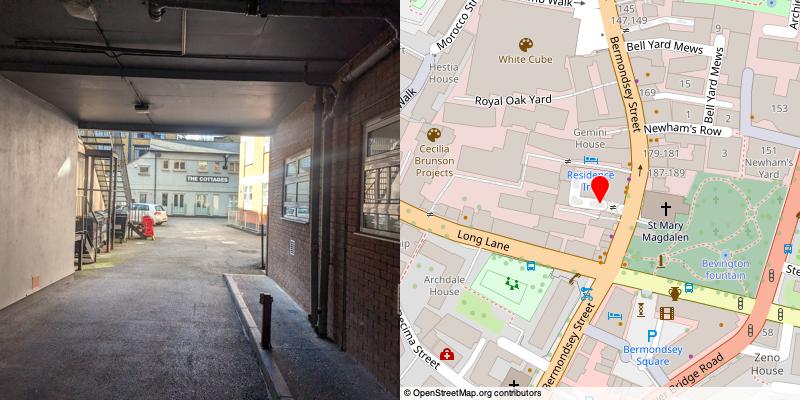
This was once a yard behind a building occupied by Austin’s chemists, who in the first half of the 20th century produced everything from cough medicine to “fireproofing for theatrical scenery”. The people behind the residential redevelopment in 2001 presumably thought Chemical Factory Mews didn’t sound very appealing.
#169 Bermondsey Mews, Southwark, SE1
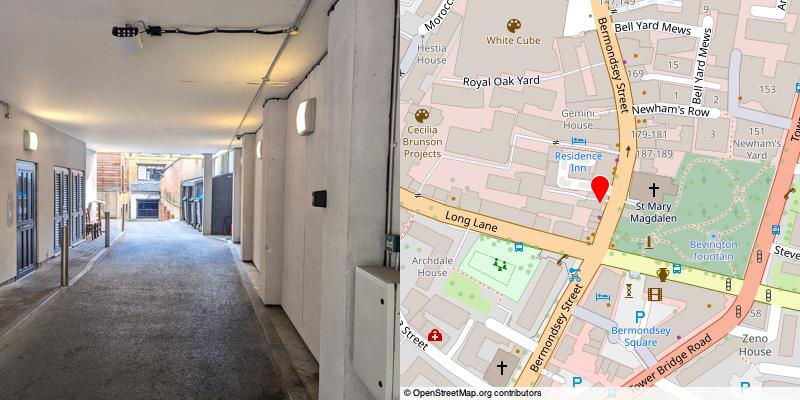
I am not 100% sure I took a photo of the right thing as what ‘Bermondsey Mews’ actually is seems slightly vague - it consists of a Unit B2 and a Unit B3 which are both around here somewhere. I hope the exist, anyway, because last year someone paid £2 million quid for whatever Unit B2 is. If you paid £2 million quid for Unit B2, or know what happened to Unit B1, do let me know!
#170 Koops Mill Mews, Southwark, SE1
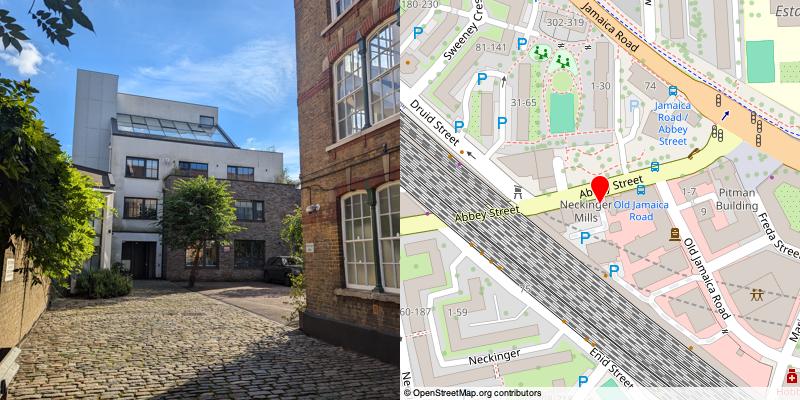
Koops Mill Mews is a 2010s development of housing and offices behind what was Neckinger Mill, a 19th century leather tannery that was operational until 1981. At the 1947 British Industries Fair they could be found showing off leather from crocodiles, seals and fancy calves (to be worn on fancy calves?).
But why Koops Mill Mews, rather than the more obvious Neckinger Mill Mews? Possibly to avoid confusion - the immediate area has a Neckinger Street, and a Neckinger Estate Road, and a road simply called ‘Neckinger’, all deriving from the area’s ‘lost’ river, the Neckinger, which has mostly disappeared underground.
Whoever picked the name wasn’t slacking - it’s named for Matthias Koops, who worked at the mill before they started using it to hack the skin off crocodiles etc, when it was a paper mill. To understand what Koops attempted to do there, and why he should be worthy of a Mews, I should first note something unlikely-sounding about paper: it didn’t used to be made out of wood.
Though wood and paper are now so inextricably linked that we talk about “dead tree” editions of books, historically the fibre in paper was sourced from cotton and linen rags, which was not ideal because the entire industry was reliant on collecting old rags, which a) turned out to be in shorter supply than you’d think when needed on an industrial scale and b) were fairly skanky. Koops was one of the first people to seriously attempt an alternative at scale - mainly using straw, but also experimenting with wood, and even coming up with a paper recycling process which could remove the ink from previously used sheets.
After early work at Neckinger Mill, Koops raised £70,000 - millions in today’s terms, necessitating an act of parliament being passed to enable him to have more than five investors - and built Britain’s largest paper mill up the river in Millbank (I mean, where else1) in 1801 before almost immediately going bankrupt. For the second time: innovative he may have been, but he was unfortunately a serially bad businessman, and so it was left to others to turn wood-based paper into a financially viable industrial process.
Still, an essay by Karen Mulhallen in the anthology “Blake In Our Time” charmingly moots that Koops’ mill might, just about plausibly, have been one of the “dark Satanic Mills” in William Blake’s Jerusalem, and now he’s got a Mews named after him. What more could you want from posterity?
Mewses Visited So Far: 170/2380
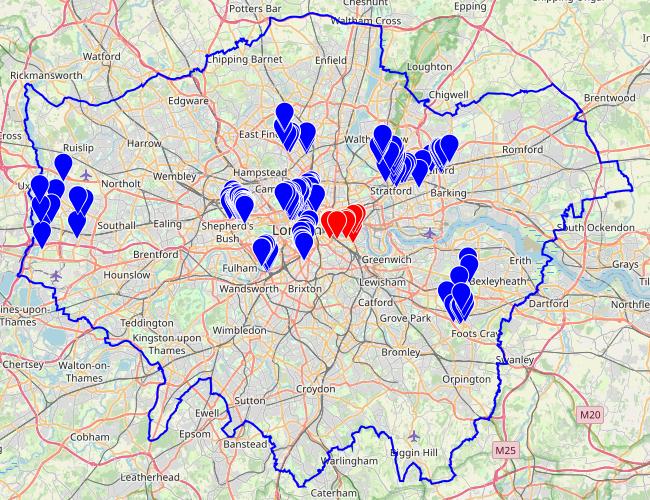
Though the name Millbank appears to derive from earlier mills on the site. ↩
Add a comment: